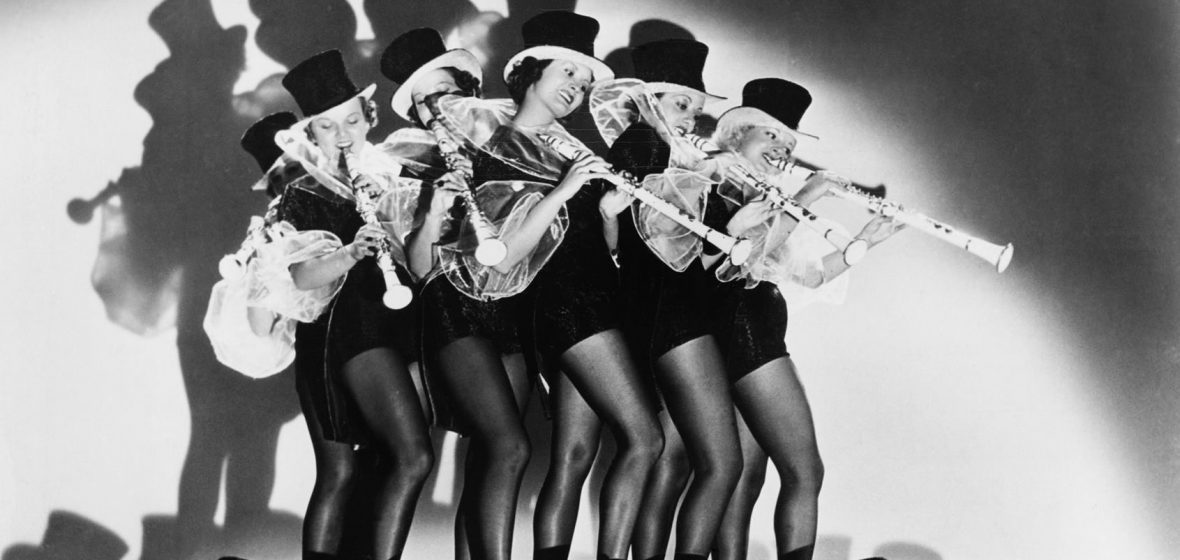Over many years of teaching, I’ve carefully considered how much to play clarinet along with students. Looking back at my own teachers, there were no fast rules. My high school teacher Jim Barkow played quite often with me, but at Eastman D. Stanley Hasty played rarely. Joe Allard never brought out his horn, but Mitchell Lurie got out his clarinet in lessons every week at Music Academy of the West.
I find that I model some aspect of clarinet playing at almost every lesson….with care. For me, it is important for students to become supremely comfortable playing for others. Lessons are an excellent opportunity for a mini-performance of assigned materials. Then after a run-through we go back and work. Concepts, fundamentals, tone and style are modeled during the working phase of lessons. Excerpts that feature first and second clarinet together may be used to work on more advanced concepts with college-age students. Duets are, of course, useful at any level.
If my advanced students express interest in teaching, I encourage them to demonstrate only after lesson assignments are heard…..and then model good clarinet habits when doing detail work. It is a learning process and a balance. Thankfully, if a teacher thinks they played too much one week, there is always next week to try something new!
Most students absorb instruction well when it is a mix of verbal, descriptive instructions and sound imitation. I model more often with young students because they seem to respond to it so well. Because I’m sitting so close to the student, they can feel, hear and imitate the resonance and/or pitch.
I asked my wonderful teaching colleagues for their philosophies of playing clarinet with students. Answers ranged from ‘never’ to Western Kentucky University’s Clarinet and Saxophone Professor, Dr. John Cipolla’s wonderfully succinct response: ‘…always, a lot…’.
Dr. Julia Heinen, Professor of Clarinet at California State University, Northridge says this about playing with her college students: ‘…Early on, freshman and sophomore, I am demonstrating constantly for many reasons. One is to hear what a clarinet should sound like, what support sounds like, what different types of articulation sound like, etc. It’s really many times in a lesson. In addition, I play along with students a lot. First, at their pitch level and then an octave below so they can hear themselves. It’s really for me the quickest way to get concepts across. As they get into their junior and senior years, it gets much less. I need them to have the concept in their head or get it there, and if I demonstrate too much it becomes them imitating me rather than thinking for themselves and getting their concept across. At the grad level, it’s less except when I’m fixing issues. Then, I need to get it done quickly because I don’t have a lot of time with masters students since they do a recital quickly. My view about all of this, is that this is an oral tradition that is passed down from generation to generation. The sounds that students hear on a CD do not directly relate to what they should hear from themselves and me playing next to them gives them a much better idea of what kind of sound they should be hearing when they are playing themselves…’
Northwestern University Bienen School of Music Clarinet Professor Steven Cohen comments that he ‘always’ plays with his students.
Dr. Diane Cawein-Barger, Professor of Clarinet, University of Nebraska-Lincoln states: ‘… ‘…For me, it depends on what a particular student needs. My teachers only picked up theirs instruments in a lesson if they really felt I needed to hear something; in fact, Mr. Marcellus rarely played in my lessons, but perhaps he did more of that when he had his sight. If I play, it is not very much. Always with a purpose of modeling in some way, but not “this is how this goes”…’
Gregory Oakes, Professor of Clarinet at Iowa State University says: ‘I make sure to play in every lesson. The nuances of how to combine dynamics, rubato, and timbre meaningfully into a phrase just can’t be succinctly expressed in a better way…..’
On her new blog, Boston clarinetist Marguerite Levin says yes to modeling for students of all ages. ‘I cannot stress how important it is to play with and for your students. For the pre-college aged student, it is imperative that they consistently hear beautiful clarinet tone every week. You are most likely the only professional sound they hear on a consistent basis!’
Sauro Berti, bass clarinet of the Teatro dell’Opera di Roma, has begun video tutorials devoted to modeling for young players:
Sauro says: ‘…also my live lessons are without words, above all when the student doesn’t speak Italian, neither my bad English, neither my very bad Spanish or any translator is available!…’
What do you do? Please add your comments below and thanks for visiting my blog!


While studying with David Shifrin he would often demonstrate his point(s) by playing the passage for us. Sometimes he would do the same thing by demonstrating on our clarinet. And even when our setup was totally different than his he would sound exactly like he did on his own horn. There were times that I think he was trying to tell us that we were becoming too obsessed with our reeds, mouthpiece, ligature and instrument instead of hearing the sound in our head and trying to duplicate it. He wanted us to listen to ourselves at all times.
That’s really nice post. I appreciate, Thanks for sharing.